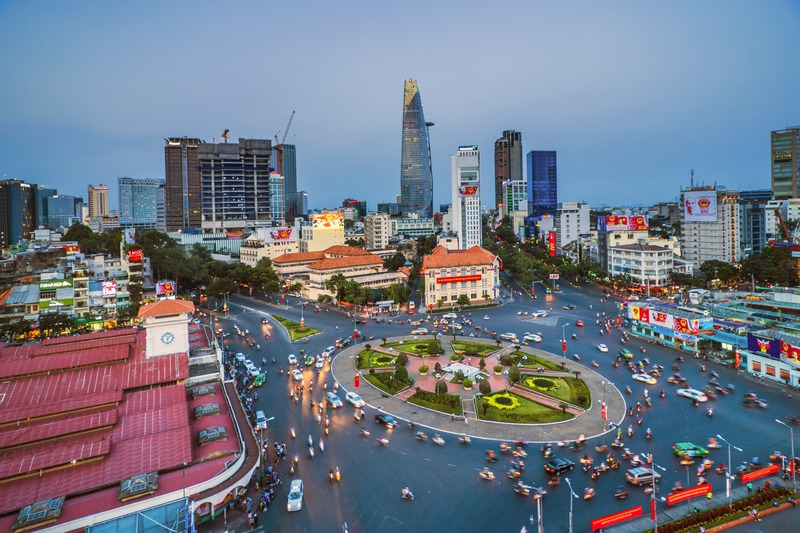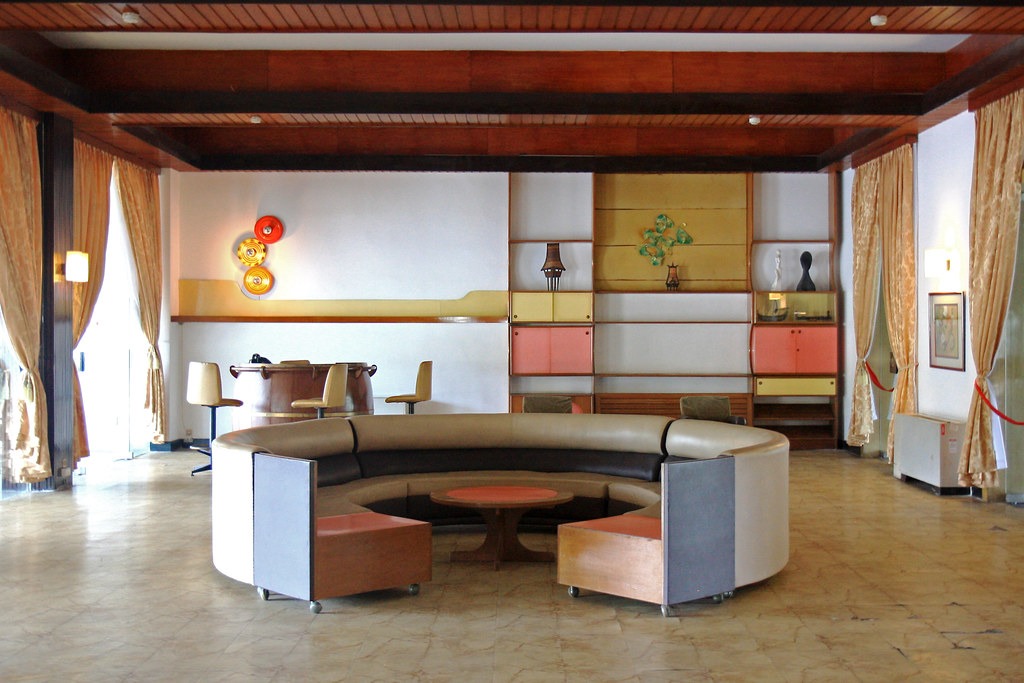The Vietnam Independence Palace: Three Historical Highlights

The Independence Palace, also referred to as Reunification Palace, is located at 35 Nam Ky Khoi Nghia street in District 1. This destination used to be home southern Vietnam’s military and government officials. Explore the four floors of this building and fiind secret underground bunkers, presidential party rooms, and a stunning rooftop view overlooking the palace grounds.
This location also was also the spot where the Vietnam War came to an end. Today, there is much to see on the premises. The Independence Palace is where Vietnam’s rich, historical narrative is shared with the visitors from all over the globe.
It was 1975 when the war ended. Everything came to a rapid end after the tanks from the northern forces came crashing through the main gates of the Reunification Palace. Since that day, not much has changed inside the palace outside of general upkeep. Part of its inherent intrigue is how the element of swift abandonment has been preserved. Opposing forces immediately left, leaving behind world-class military equipment, one helicopter that never made lift-off, and countless deserted conference rooms.
For some, the Reunification Palace is a strange, yet informative experience. During all three of my visits, I also acquired this sense of lingering eerieness. One traveler went so far as to describe his experience as being “frozen in time”.
Original decor from the 1960s -1970s remains perfectly in-tact. Locations inside the palace like the private cinema, living quarters of government officials, and underground bunkers all resonate of a time standing still.

Contents
Three attractions at the Independence Palace
America’s underground military headquarters are buried three-to-four meters beneath the surface of the Independent Palace. Take your time and slowly weave through the endless tunnel network leading visitors to rooms where top-secret strategies were communicated and put into action. Today, rumor has it the underground tunnel network is still in use. However, there is no evidence to back this intriging claim.
Below the Reunification Palace remains a signficiant amount of leftover communication equipment, secret doors, and blocked off sections of the tunnel system…
Starting the tour underground before moving upwards was an unexpected, but phenomenal build-up to the rooftop scene. At this point, any attentive visitors will have lots of historical context. So, seeing the only American helicopter that didn’t make final lift-off is more than just a lasting impression. It is a powerful representation of Vietnam’s 1000-year long struggle to gain independence.
Just opposite the helipad is the captivating rooftop viewpoint. Here, the old and new coalesce as visitors gaze down at the historical palace grounds, before looking up to find themselve completely surrounded by modern skyscrapers used for international business.
After speaking face-to-face with visitors about their experience, the responses were almost identical. This provided a clear shortcut to three of the most popular areas of the palace.
#1. Secret underground military network
The tunnel network beneath the palace is suspected of being longer and more active than we know, adding to the strange aura of this unique attraction.

The underground bunkers were carefully assembled to withstand slews of bombing. During construction, iron was built into the framework covering 170 kilograms per square meter. For more protection, the walls were made of one-meter thick concrete. The structural design of the tunnels is said to be capable of withstanding bomb explosions up to 500 kilograms in a single attack. If you like history, a slow stroll through the bunkers will transport you back in time.
#2. Presidential theatre, bar, and casino
President’s party too. And the Reunification Palace had several areas dedicated to entertainment. Take the stairs, or elevator, to the third floor and observe the game room. This space was dedicated to blowing-off steam over a few drinks in the game room and lounge.

Go to level four for a look at the in-house private casino and bar. Another must-see location is an unkempt cinema stocked full of old film reels.
#3. The rooftop and helipad
Keep moving upwards towards the rooftop for a perfect end to your tour. Aside from a leftover helicopter, walk to the other side of the rooftop. Here, visitors cap-off their tour with a stunning viewpoint overlooking the Ho Chi Minh City skyline of 2019.
Other nearby attractions
If you have energy for more sightseeing, Thong Nhat Park is literally across the street. Travelers can walk through the park in roughly five-to-ten minutes and discover two additional prominent attractions, the Saigon Notre-Dame Cathedral and Central Post Office.

General information for the Independence Palace
Take note that the palace closes in the middle of the day for lunch. The Independence Palace is open to the public everyday from 7:30 AM – 11.00 AM. After lunch, it reopens from 1 PM – 4 PM.
Two Insider Tips
Some information is simply hard to find online. So, in order to enhance your experience and provide often overlooked details we spent 3 days wandering through the palace halls. In return, we were able to compile two tips that just might make your visit a bit more enjoyable.
#1. Rent a headset for a digitally led tour
Headset rental is highly-recommended if visiting the palace on your own. The rental area is just to the right of the main entrace, but is still very easy to overlook. The information provided on the digital tours connects all the dots making way for a proper tour providing more than enough historical context.
#2. Book a fully-customized tour to get the most out of your visit
Large commercial group tours in Vietnam are simply an overcrowded mess. Not to mention, their highly-regitmented itenerary pushes their own customers through as fast as possible to make way for the next group. However, there are alternative options if you wish to explore with a private, internationally-licensed guide. For those keen on exploring at your own pace, there are only a few tours that provide customized tours for each and every customer.
Related Content:
[Article] Ten Sites To-See In Ho Chi Minh City
[Video] Chinatown In Ho Chi Minh City: Discovering The Thien Hau Pagoda